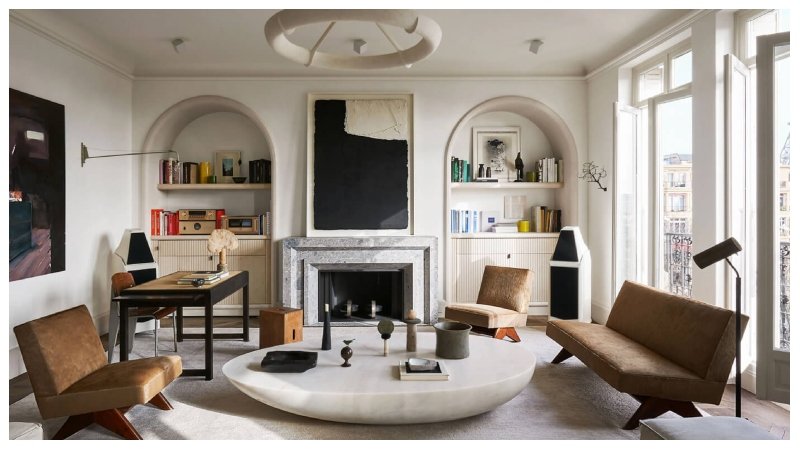Interior design is more than just decorating a room—it’s about creating an environment that reflects your personality, supports your lifestyle, and enhances comfort and beauty. Over time, several design styles have evolved, each with its own unique characteristics, color palettes, and materials. Understanding these styles can help you choose one that resonates with your vision for your home.
1. Modern Interior Design
Key Features
Modern design emphasizes clean lines, simplicity, and functionality. It avoids clutter and ornate detailing, focusing instead on form and structure.
Color Palette
-
Neutral tones such as white, beige, and gray
-
Occasional use of bold colors as accents
Materials
-
Glass, metal, and steel
-
Smooth, polished surfaces
Common Elements
-
Open floor plans
-
Minimalist furniture
-
Large windows for natural light
2. Contemporary Interior Design
Key Features
Often confused with modern design, contemporary style is more fluid and reflects current trends. It evolves with time, incorporating elements from various styles.
Color Palette
-
Black, white, and neutrals with pops of bold colors
Materials
-
Mixed materials like glass, chrome, and natural wood
Common Elements
-
Soft, rounded shapes
-
Artistic and sculptural lighting
-
Emphasis on comfort and functionality
3. Minimalist Interior Design
Key Features
Inspired by Japanese design philosophy, minimalism embraces simplicity and functionality. Every element serves a purpose, and clutter is eliminated.
Color Palette
-
Monochrome schemes with occasional natural tones
Materials
-
Natural materials like wood and linen
-
Smooth, unadorned surfaces
Common Elements
-
Clean lines and open spaces
-
Simple, multipurpose furniture
-
Focus on light and airiness
4. Industrial Interior Design
Key Features
Industrial style draws inspiration from old factories and warehouses. It celebrates raw, unfinished materials and a rugged aesthetic.
Color Palette
-
Grays, blacks, and browns
-
Metallic and rustic finishes
Materials
-
Exposed brick, steel, and concrete
-
Reclaimed wood
Common Elements
-
Exposed pipes and ductwork
-
Large, open spaces
-
Vintage or repurposed furniture
5. Scandinavian Interior Design
Key Features
Scandinavian design is known for its simplicity, functionality, and connection to nature. It emphasizes light, warmth, and comfort.
Color Palette
-
Whites and light neutrals
-
Soft pastels or muted tones
Materials
-
Natural wood, wool, and leather
-
Organic fabrics
Common Elements
-
Minimal clutter
-
Cozy textiles like throws and rugs
-
Large windows for natural light
6. Bohemian Interior Design
Key Features
The bohemian (boho) style is artistic, eclectic, and free-spirited. It celebrates individuality and global influences.
Color Palette
-
Rich, vibrant colors
-
Layered patterns and textures
Materials
-
Rattan, macramé, and vintage fabrics
-
Handcrafted decor items
Common Elements
-
Mix of old and new furniture
-
Plants and greenery
-
Artistic and travel-inspired accessories
7. Traditional Interior Design
Key Features
Traditional interiors are elegant and timeless, inspired by European decor from the 18th and 19th centuries.
Color Palette
-
Warm tones like cream, gold, and burgundy
Materials
-
Wood, silk, and velvet
-
Intricate detailing and carvings
Common Elements
-
Symmetrical layouts
-
Classic furniture and artwork
-
Chandeliers and ornate decor pieces
8. Rustic Interior Design
Key Features
Rustic design brings the beauty of nature indoors. It’s cozy, warm, and unpretentious, emphasizing natural materials.
Color Palette
-
Earthy tones like brown, beige, and forest green
Materials
-
Reclaimed wood, stone, and metal
-
Handcrafted items
Common Elements
-
Exposed beams and fireplaces
-
Cozy textiles
-
Weathered finishes
9. Coastal Interior Design
Key Features
Inspired by beachside living, coastal interiors are airy, relaxed, and filled with light.
Color Palette
-
Whites, blues, and sandy neutrals
Materials
-
Light wood, linen, and cotton
-
Nautical accents
Common Elements
-
Open, breezy layouts
-
Marine-themed decor
-
Natural light emphasis
10. Transitional Interior Design
Key Features
Transitional design blends the best of traditional and modern styles. It’s balanced, comfortable, and timeless.
Color Palette
-
Neutral shades with subtle contrasts
Materials
-
Wood, glass, and fabric combinations
Common Elements
-
Streamlined furniture with classic details
-
Balanced mix of textures
-
Clean yet cozy ambiance
Conclusion
Interior design styles provide a foundation for shaping the look and feel of your home. Whether you prefer the clean simplicity of minimalism, the warmth of rustic design, or the artistic flair of bohemian interiors, each style offers unique ways to express personality and comfort. The key lies in choosing a style that resonates with you—and adapting it to suit your lifestyle.
FAQs
1. What is the most popular interior design style today?
Modern and Scandinavian styles are currently among the most popular due to their clean lines, neutral colors, and focus on simplicity and functionality.
2. How do I choose the right interior design style for my home?
Consider your lifestyle, personal taste, and how you want your space to feel. Collect inspiration from magazines, Pinterest, or design websites to see what resonates with you.
3. Can I mix different interior design styles?
Yes! Mixing styles—known as eclectic design—can create a unique and personalized look. The key is to balance colors, textures, and proportions for harmony.
4. What’s the difference between modern and contemporary design?
“Modern design” refers to a specific historical style from the early to mid-20th century, while “contemporary design” reflects current trends and is constantly evolving.
5. How can I decorate on a budget while maintaining style?
Focus on small changes like paint, lighting, and accessories. Thrift stores, DIY projects, and rearranging existing furniture can also refresh your space affordably.

